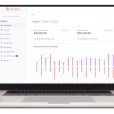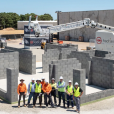When the University of Rochester came knocking on the door of biopharmaceutical company Pharmaxis (ASX: PXS), it was a boost from a respected group of researchers for their lead drug candidate PXS-5505 which has continued to draw attention from around the world.
By agreement with Pharmaxis, the University of Rochester embarked on preclinical work on PXS-5505 as a liver cancer treatment, publishing their results in August, and according to their findings, PXS-5505 can play a major role in improving liver cancer treatments, a disease that kills more than 30,000 Americans each year.
Where drug developers often have no other choice than to pursue clinical trials themselves, in this case the University of Rochester asked Pharmaxis if they could conduct the liver cancer trials as an investigator-led study. The University subsequently applied for and last month was granted approval by the US FDA to conduct a phase 1c/2a clinical trial in liver cancer.
Institutional investors were quick to respond, taking a slice of Pharmaxis as evidenced by their oversubscribed Placement in November when raising $7.2m from some very well known biotech investors. This was then followed up with an offer to existing shareholders who shared similar outlooks to provide the Company with $2.5m from an oversubscribed Share Purchase Plan that was only targeting $2m.
“The total of $9.8 million raised from the SPP and placement last month significantly strengthens the Pharmaxis balance sheet as the Company conducts two phase 2a clinical studies of its lead drug PXS‐5505 in cancer and a study of topical drug PXS‐6302 in patients with wound and burns scarring,” said Pharmaxis CEO, Gary Phillips.
Making the liver cancer trials attractive to shareholders was the fact that Pharmaxis has already completed Phase 1c trials in myelofibrosis (bone marrow cancer) patients where it has proven to be safe across increasing dose levels with the highest dose giving >90% enzyme inhibition and no side effects.
Unlike other drugs in the market, PXS-5505 has the potential for disease-modifying efficacy which offers new hope for many myelofibrosis patients where existing treatments deal mainly with the symptoms of the disease, do not significantly extend life expectancy and are often poorly tolerated. Researchers at the University of Rochester believe PXS-5505 can be effective as first line treatment when added to existing chemotherapy.
In pre-clinical liver cancer research PXS-5505 demonstrated that it can significantly improve survival rates and delay tumor growth for a disease that currently generates USD $2 billion per annum for current treatments. This market is expected to increase to $7 billion by 2027 due to increased incidence of the disease.
Following their two oversubscribed offers, Pharmaxis will commence its investor-led clinical trial for liver cancer which has already received FDA approval to proceed. It looms as a very busy year for the drug developer which is also expecting to deliver Phase 2 clinical data for its myelofibrosis trial for which dosing has already commenced.
Following the oversubscribed capital raises, Pharmaxis is well positioned financially with $25m cash in the bank (30 Sept plus $9.8m) to progress their drug development pipeline.
Pharmaxis welcomes investors to register for updates on their latest developments and industry research by joining their mailing list here.
- Harris Technology to expand refurbished tech division amid rising demand from cost-conscious Australians - April 30, 2025
- Harris Technology secures major investment from Taiwan’s FSP Technology at 100% premium - March 10, 2025
- ARC Funds acquires 30% of auzbiz Capital as latest direct-to-investor marketing venture - October 8, 2024












Leave a Comment
You must be logged in to post a comment.